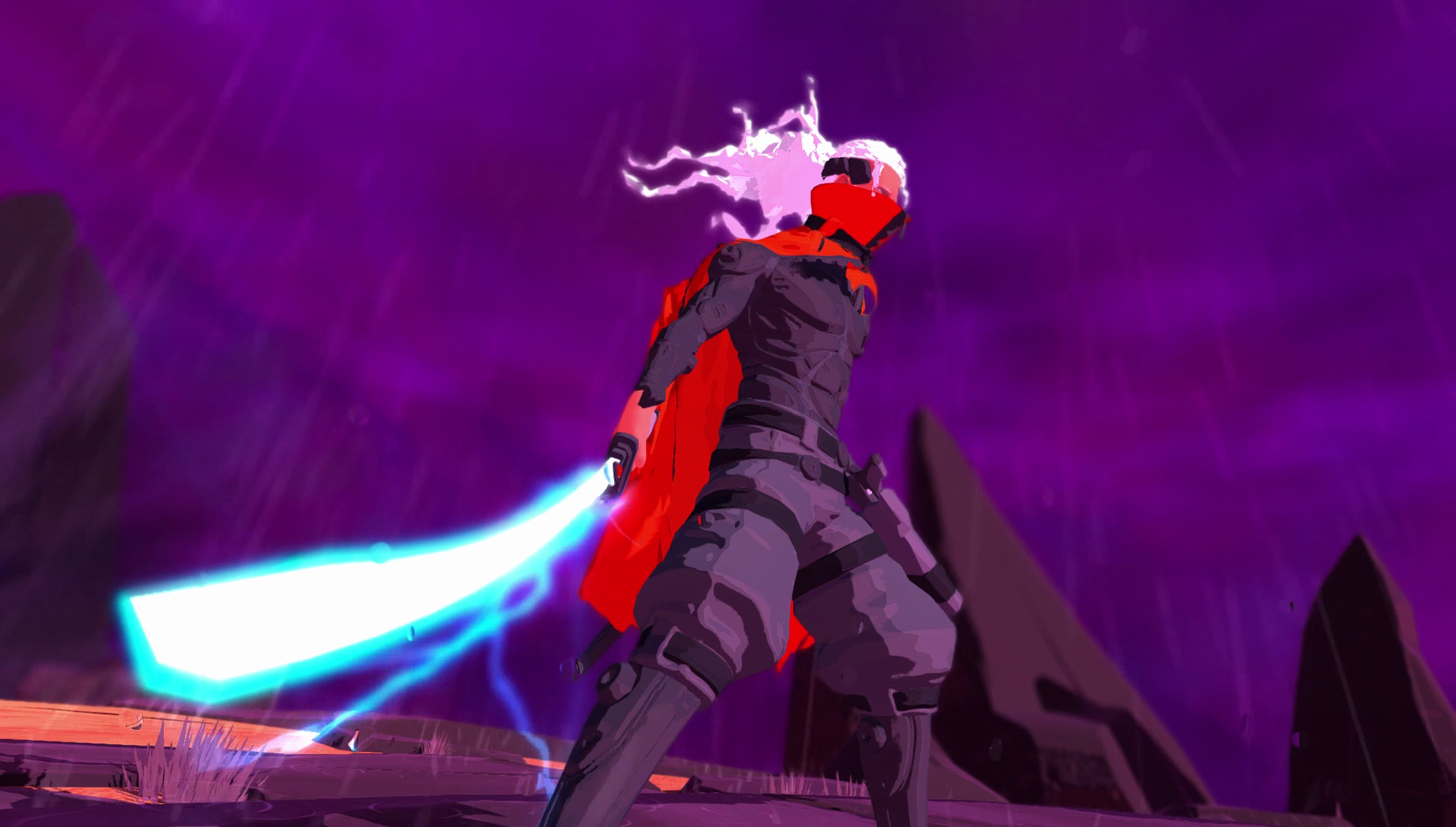Furi is about over the top boss fights and nothing but
With stylized neon art from Afro Samurai's Takashi Okazaki.

The warden’s head rotates 120 degrees to showcase an angry porcelain mask. “You will never defeat me!” he says, and cackles at the sky. Clearly, the guy’s gone mad. And so have I. He spits out an ocean of bullets and I dart between them like a damn dolphin. He slashes in quicker, more erratic patterns, and I parry them all. He screams in hollow rage, says some nonsense about how he’s going to lock me up and throw away the key, so I pull my heart’s ripcord: my grip tightens and my brow furrows. If my hair could turn yellow and catch on fire, I’m sure it would.
Learning to read
To call Furi a series of neon ninja boss battles feels reductive, even if it’s true. It’s structured that way: you’re tasked with escaping a floating celestial prison and the only folks standing in your way are just as strong and capable as you—there are no regular meat sponge grunts, just a few quiet walks between the bigger baddies. That said, the combat is a smooth combination of twin stick bullet hell dodging and shooting with the precise, intimate sword combat of Devil May Cry. The boss I fought was a chatty celestial prison warden who switched between shooting deadly laser orbs and chaining sword combos on my pristine anime ninja mug.
I’m told defeating him won’t be a simple matter of finding a weak spot and hitting it three times, but a dynamic, speedy series of layered challenges. I chortle, silently. The warden begins by darting around the arena and shooting off a short wave of bullets. Once I hit him enough times with my own gun, he hunches over and opens up for a melee bout. The camera zooms in and he starts wailing in a series of attack patterns plainly telegraphed by sound and movement. I can dodge, or by pressing a counter button at the moment before he strikes, I can parry his blows and open him up for another critical combo.
As soon as I get a grip on his initial bullet and melee attacks, the warden throws a few more patterns into each. The bullets grow in number, some new melee attacks that can’t be parried are telegraphed by a huge swath of pulsating red on the floor, so I’m required to memorize a few new patterns and dodge them in rhythm. The more I beat up on the guy, the more combos he introduces. By the end, the entire arena is plastered with neon bullets, his melee combos hit faster and harder, and I feel like I’m barely scraping by.
But I’m actually kicking ass. To anyone watching, it might look like I’ve been playing Furi for a while now or that I’m some incontrovertible video game master with skills inborn generations ago and an ego you can smell a block away. Truth is, I’m not great at games. I’m OK, at best, but Furi’s combat, while challenging, teaches its vital patterns and rhythms at an incremental pace instead of punishing you with them all at once. Think Bop-It, but fun, and with art from Afro Samurai’s Takashi Okazaki—literally though, he’s contributing heavily to the art design. It took me a second to process too.
Furi distills the basic nature of things I find ‘cool’ and combines them into a stylistic, excessive boss gauntlet. It’s all here: anime cyborg ninjas, a pulsing neon aesthetic, an energetic synthy score, dynamic and responsive combat, and enemies that talk a whole lot of shit. I worry that Furi’s kitchen sink approach to style might turn out to be its achilles heel, an amalgamation of ideas that don’t come together into a game with a unique identity, but from the short bit I played, it worked. I felt like a badass cyborg ninja, and really, that’s all I can ask for in this short life.
Furi is set to release this summer.
Keep up to date with the most important stories and the best deals, as picked by the PC Gamer team.
James is stuck in an endless loop, playing the Dark Souls games on repeat until Elden Ring and Silksong set him free. He's a truffle pig for indie horror and weird FPS games too, seeking out games that actively hurt to play. Otherwise he's wandering Austin, identifying mushrooms and doodling grackles.


